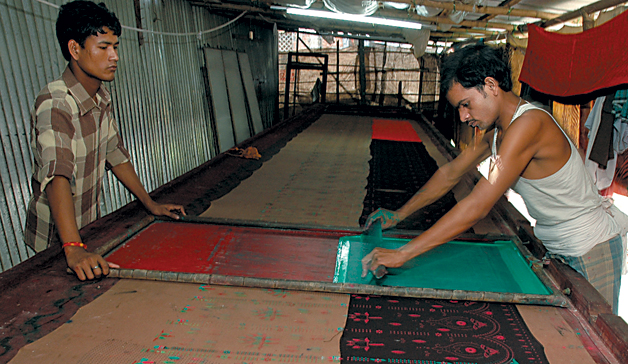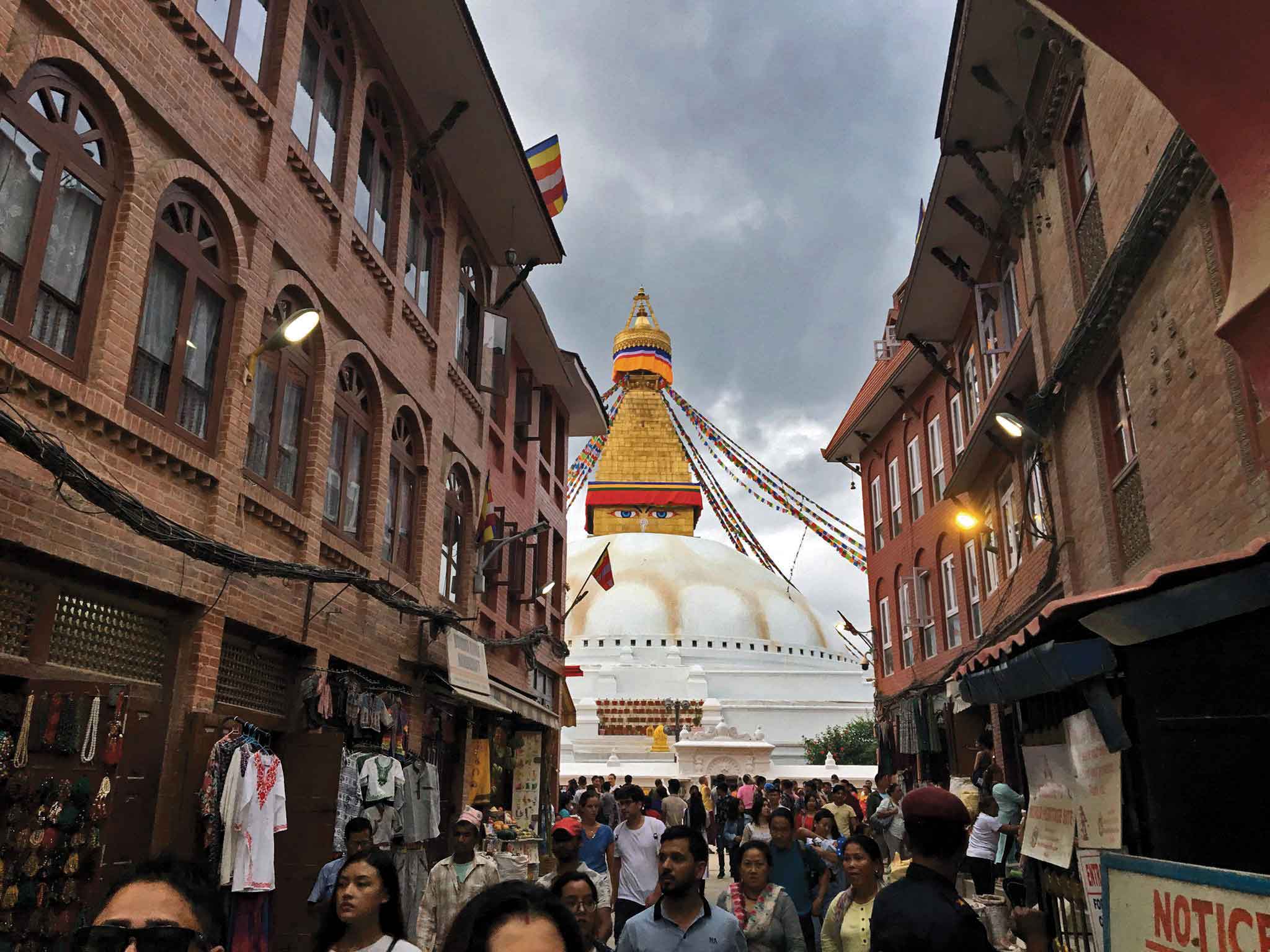
Ten years ago, I checked out a little shed where some Indians seemed to be making what I thought were printed saris using woodblocks. It was near Pashupatinath, just as you start downhill, taking the second road after turning right from Gaushala. It turns out they were making coverings for quilts. This time when I walked into another shed with corrugated iron roofs and walls, I found four Indian workers making screenprints.
Watching these people making prints is fascinating. Most skilled workers who come from India are Muslims and so are these printmakers from Bihar. They work at an amazing pace, but still manage to place the screen at the exact spot where they need to lay the dye. Working in pairs, they first fix a sheet of plain cotton cloth on the long work-table. Placing the screen with the design on top of the cloth, one of them spreads the dye over it with a squeegee (rubber blade). The dye seeps through the patterns that have been etched on the screen by means of capillary action. To do this, they start from one end of the long table and wind up at the other end. Then they start again to lay another color. They go over the same spot several times, each time adding another layer of dye. The design slowly changes with added layers of color until a beautiful pattern emerges.
Khalil Ahmad, the man in charge has been running the business for the last twenty-five years and learnt the trade here from his predecessors. “We use two types of dye,” he explains, “One comes as a powder from India which we mix with hot water. Then we cook arrowroot in which we mix gum and caustic soda. We put them all together and mix thoroughly to make the dye. This is applied on the cloth that is used for making quilts and one of its characteristics is that the color changes when it dries. The other type of dye is more refined and also comes from India. We apply this on the cloth that is attached to midis that are worn by women.” Most of the material comes from India like the polyester screen. The screen is mounted on frames made of GI pipes and measure about 6ft X 2 ½ ft.
The patterns on the screen are made here. Khalil informs, “The process of making the designs on the screen is similar to making photographic prints. We make the pattern on the negative and placing this on top of the emulsion coated polyester screen, we make an exposure in the dark using neon lights. The areas of emulsion that were not exposed to light dissolve and wash away, leaving a negative stencil of the image on the screen. We then wash the emuslsion and finally dry the screen. The screen then has the desired pattern on it, through which the dye seeps in.”
Unlike Khalil, most of his workers are descendants of silkscreen printers from Bihar. When business is good, he hires about eight people who work in pairs. “There is a lot of work during the winter because it is the season for quilts. Most of the work we get is for cloth that goes into making quilts. The other type of work we get is orders from Thamel. These customers give us the patterns and we make them on the screen.” The work load is high for about six months after which there is a slump. But Khalil also blames the unhealthy competition for the slump as there are now too many players in the field, and they have also brought the prices down.
Work begins early in the shed, around 8am, but that depends on the weather as the printed cloths have to be dried out in the sun. In wet weather, the work is slow because of the time the cloth takes to dry. Work goes on most of the day at the shed while Khalil goes to sell his products. In the evening when printmaking is over, the workers wash the silkscreen with water and they look as good as new again. The next day, work begins all over again. “In Thamel you will also find T-shirts that have been made by using screenprinting,” says Khalil. When reminded of the days when woodblocks were being used instead of screens, he adds, “We were one of them.”
For details: 4498058











